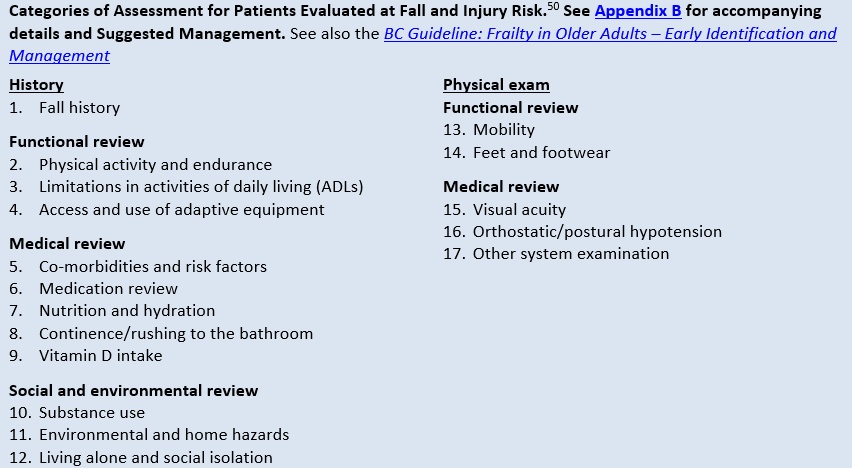See This Report about Dementia Fall Risk
Table of ContentsAll about Dementia Fall RiskThe 2-Minute Rule for Dementia Fall Risk7 Simple Techniques For Dementia Fall Risk6 Simple Techniques For Dementia Fall Risk
A loss threat evaluation checks to see how likely it is that you will fall. It is primarily done for older adults. The analysis normally includes: This consists of a collection of inquiries regarding your total wellness and if you've had previous falls or issues with equilibrium, standing, and/or walking. These tools test your toughness, equilibrium, and stride (the method you walk).STEADI consists of testing, assessing, and intervention. Interventions are referrals that may decrease your risk of falling. STEADI includes 3 actions: you for your danger of falling for your risk elements that can be improved to attempt to stop falls (for instance, equilibrium troubles, impaired vision) to decrease your risk of falling by making use of reliable strategies (for instance, providing education and sources), you may be asked numerous concerns including: Have you dropped in the previous year? Do you feel unstable when standing or strolling? Are you stressed over dropping?, your company will evaluate your toughness, equilibrium, and stride, using the following autumn evaluation tools: This examination checks your stride.
You'll sit down once more. Your company will examine how much time it takes you to do this. If it takes you 12 seconds or more, it might indicate you go to greater threat for a loss. This test checks strength and balance. You'll rest in a chair with your arms crossed over your breast.
Move one foot halfway onward, so the instep is touching the big toe of your various other foot. Move one foot totally in front of the various other, so the toes are touching the heel of your other foot.
Not known Facts About Dementia Fall Risk
Many drops occur as a result of numerous contributing variables; as a result, taking care of the danger of falling begins with recognizing the variables that contribute to fall danger - Dementia Fall Risk. Several of one of the most pertinent danger variables consist of: History of previous fallsChronic clinical conditionsAcute illnessImpaired stride and equilibrium, reduced extremity weaknessCognitive impairmentChanges in visionCertain high-risk medicines and polypharmacyEnvironmental variables can likewise boost the risk for drops, consisting of: Inadequate lightingUneven or harmed flooringWet or unsafe floorsMissing or harmed handrails and order barsDamaged or poorly fitted devices, such as beds, wheelchairs, or walkersImproper use assistive devicesInadequate supervision of individuals living in the NF, consisting of those who display aggressive behaviorsA successful loss risk management program calls for a thorough professional evaluation, with input from all participants of the interdisciplinary group

The treatment plan ought to also include treatments that are system-based, such as those that advertise a risk-free environment (proper illumination, hand rails, order bars, and so on). The effectiveness of the interventions need to be evaluated occasionally, and the treatment strategy changed as necessary to reflect changes in the loss danger evaluation. Implementing an autumn danger administration system utilizing evidence-based ideal technique can lower the prevalence of drops in the NF, while restricting the capacity for fall-related injuries.
More About Dementia Fall Risk
The AGS/BGS guideline advises evaluating all adults matured 65 years and older for fall risk every year. This testing includes asking people whether they have actually fallen 2 or more times in the past year or sought medical attention for an autumn, you could check here or, if they have actually not fallen, whether they feel unstable when walking.
Individuals that have actually fallen once without injury ought to have their balance and gait reviewed; those with gait or equilibrium abnormalities should receive added analysis. A history of 1 loss without injury and without gait or equilibrium issues does not necessitate further evaluation beyond ongoing annual autumn threat screening. Dementia Fall Risk. A fall risk analysis is called for as component of the Welcome to Medicare exam

An Unbiased View of Dementia Fall Risk
Recording a falls history is one of the top quality indicators for fall prevention and administration. copyright medications in certain are independent forecasters of drops.
Postural hypotension can usually be eased by decreasing the dosage of blood pressurelowering medications and/or quiting drugs that have orthostatic hypotension as an adverse effects. Use above-the-knee assistance tube and copulating the head of the bed elevated might likewise lower postural reductions in high blood pressure. The advisable elements of a fall-focused physical assessment are revealed in Box 1.

A yank time above or equal to 12 secs recommends high fall danger. The 30-Second Chair Stand examination examines lower extremity stamina and balance. Being unable to stand from a chair of knee height without using one's arms suggests enhanced autumn threat. The 4-Stage Balance test examines fixed equilibrium by having the client stand in 4 settings, each progressively much more challenging.